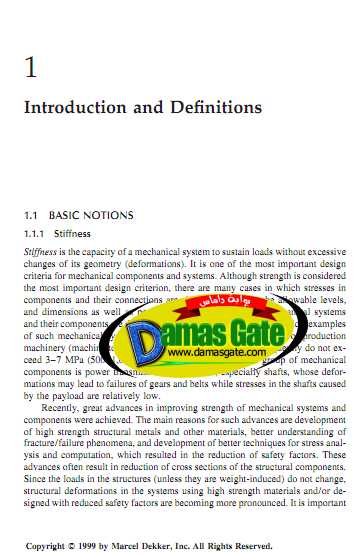Stiffness and Damping in Mechanical Design

1.1 BASIC NOTIONS
1.1.1 Stiffness
Stiffness is the capacity of a mechanical system to sustain loads without excessive
changes of its geometry (deformations). It is one of the most important design
criteria for mechanical components and systems. Although strength is considered
the most important design criterion, there are many cases in which stresses in
components and their connections are significantly below the allowable levels,
and dimensions as well as performance characteristics of mechanical systems
and their components are determined by stiffness requirements. Typical examples
of such mechanical systems are aircraft wings, and frames/beds of production
machinery (machine tools, presses, etc.), in which stresses frequently do not exceed
3–7 MPa (500–1,000 psi). Another stiffness-critical group of mechanical
components is power transmission components, especially shafts, whose deformations
may lead to failures of gears and belts while stresses in the shafts caused
by the payload are relatively low.
Download
http://s18.alxa.net/s18/srvs2/02/001...cal.Design.rar